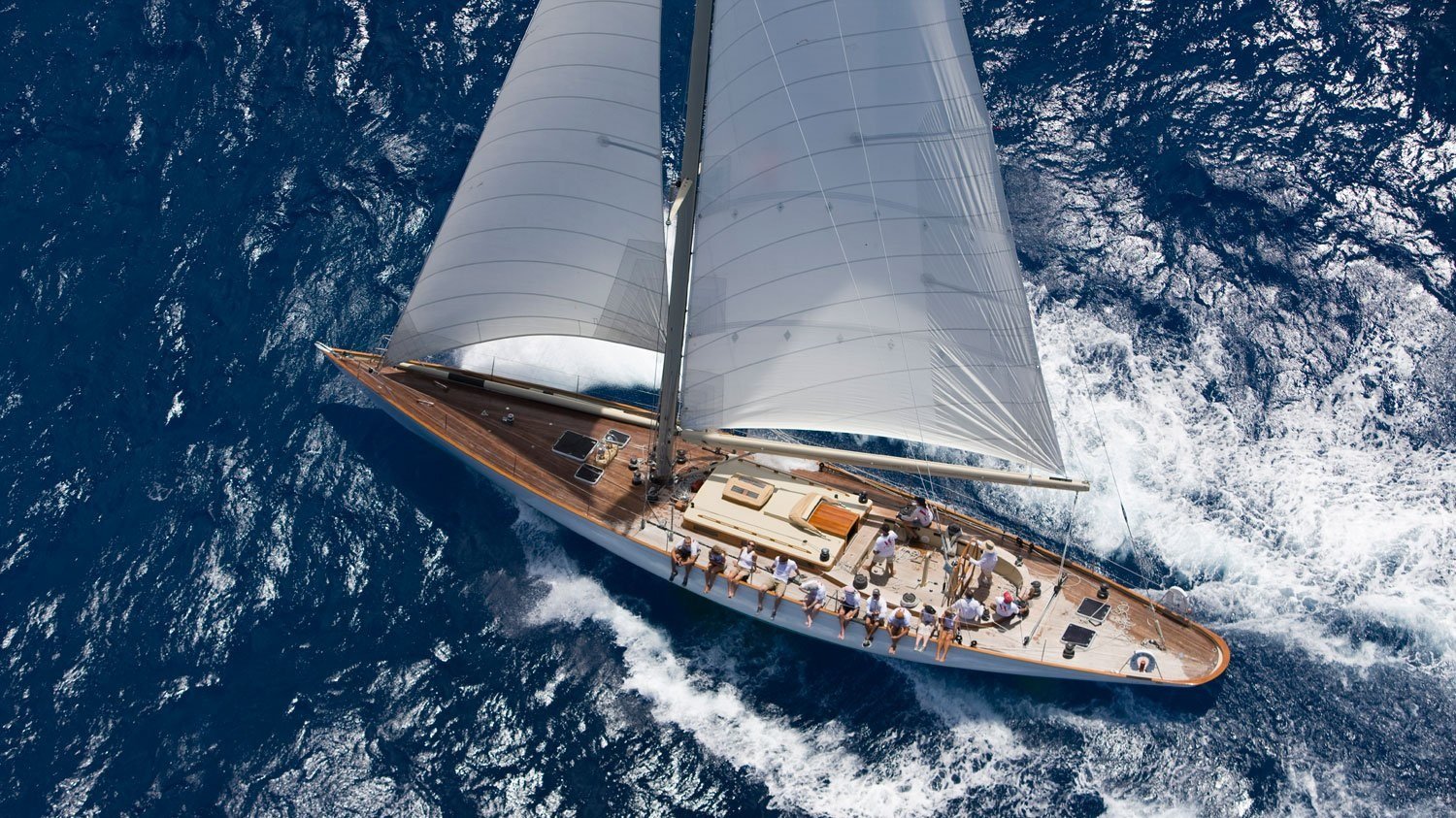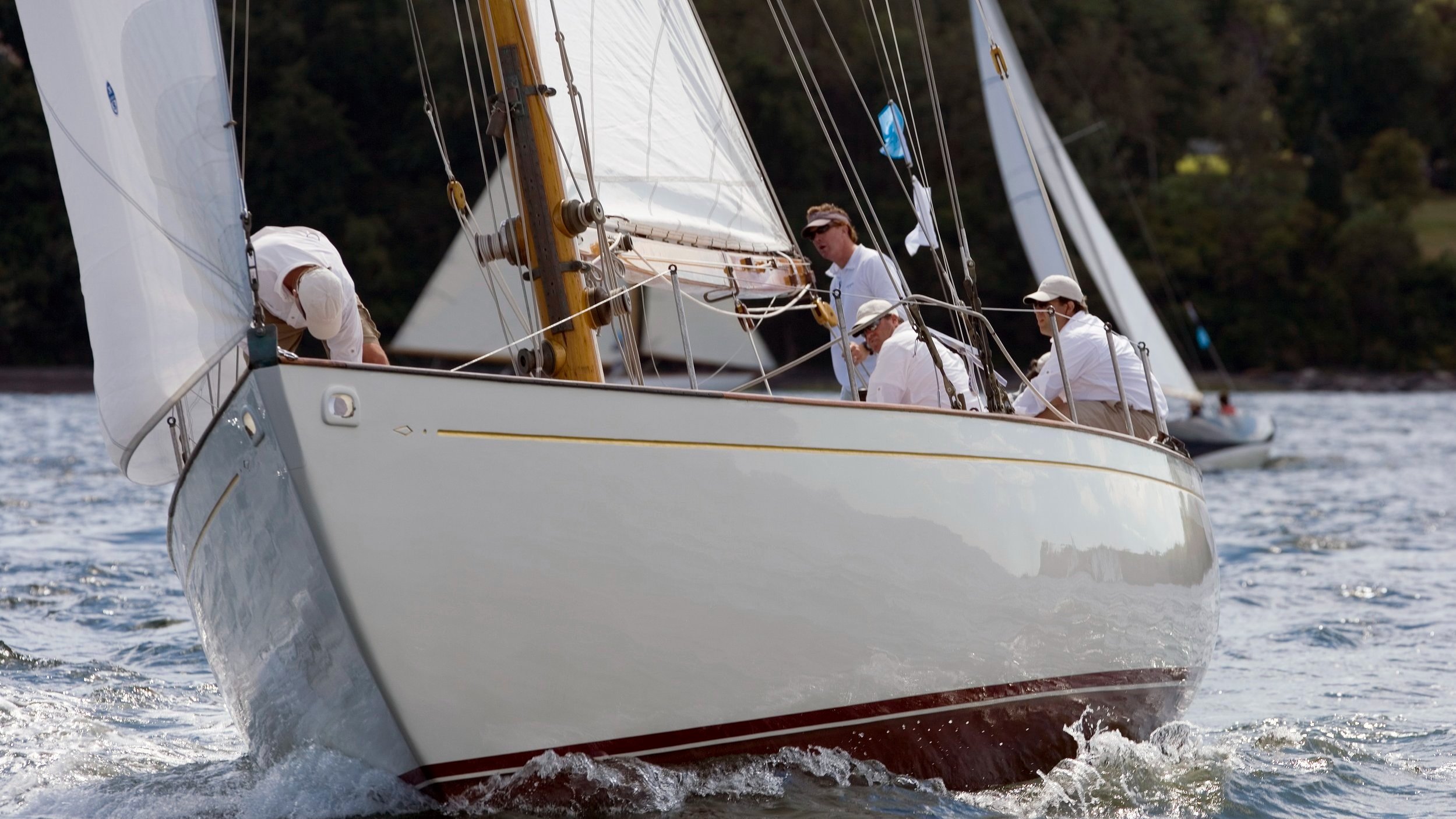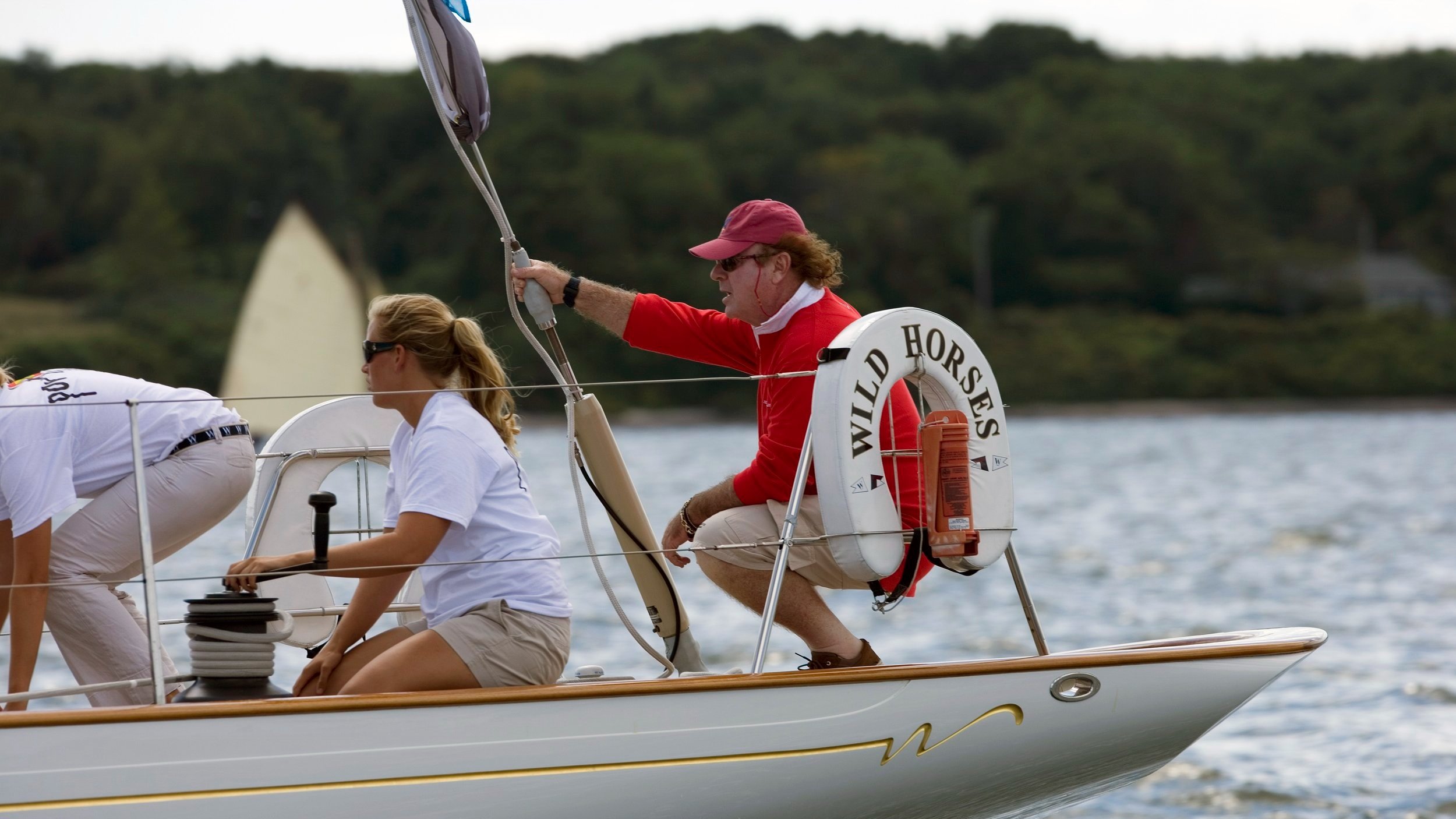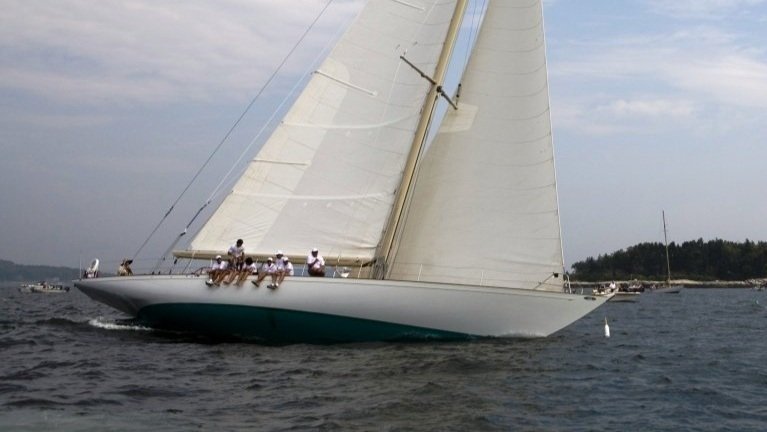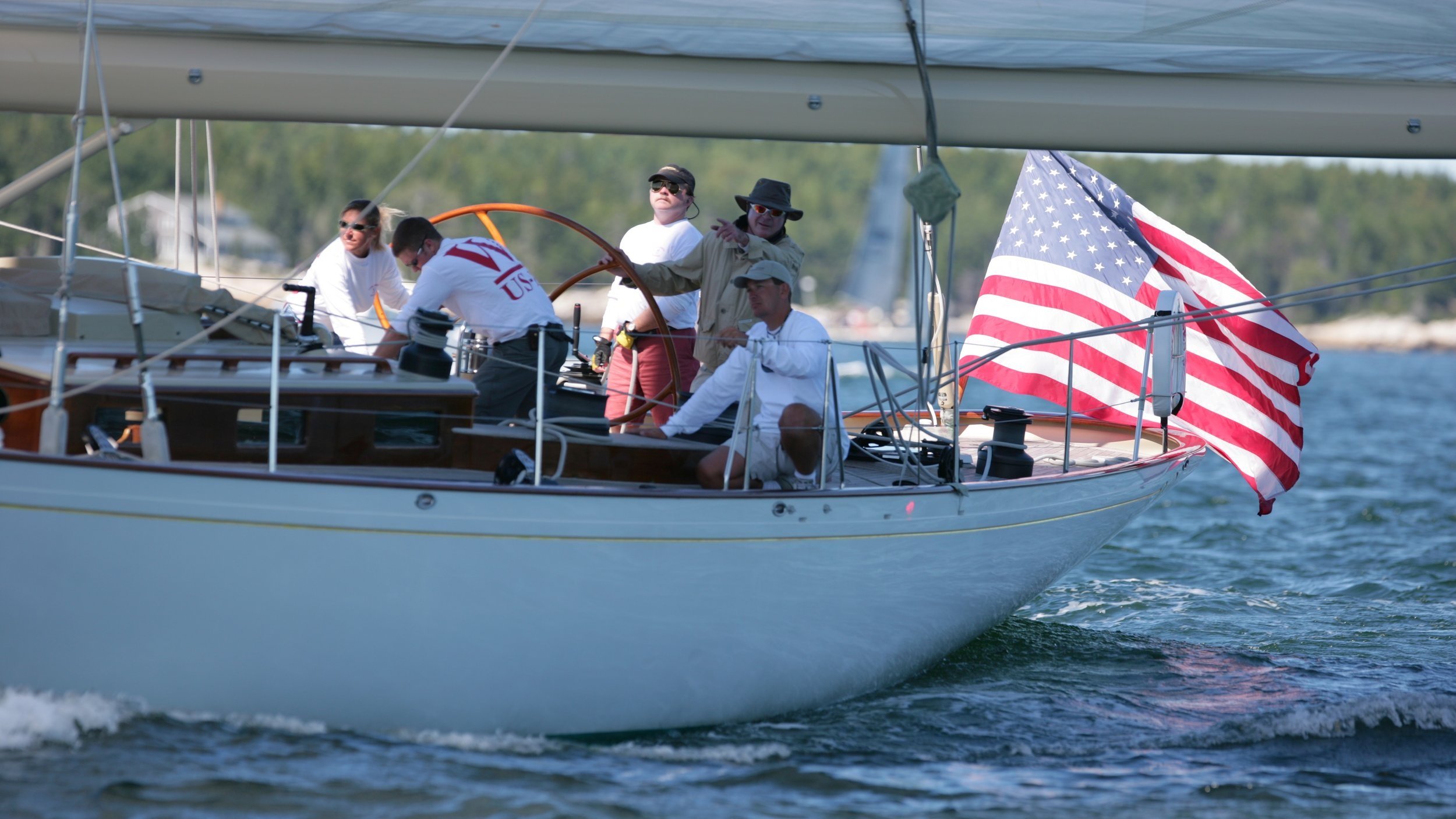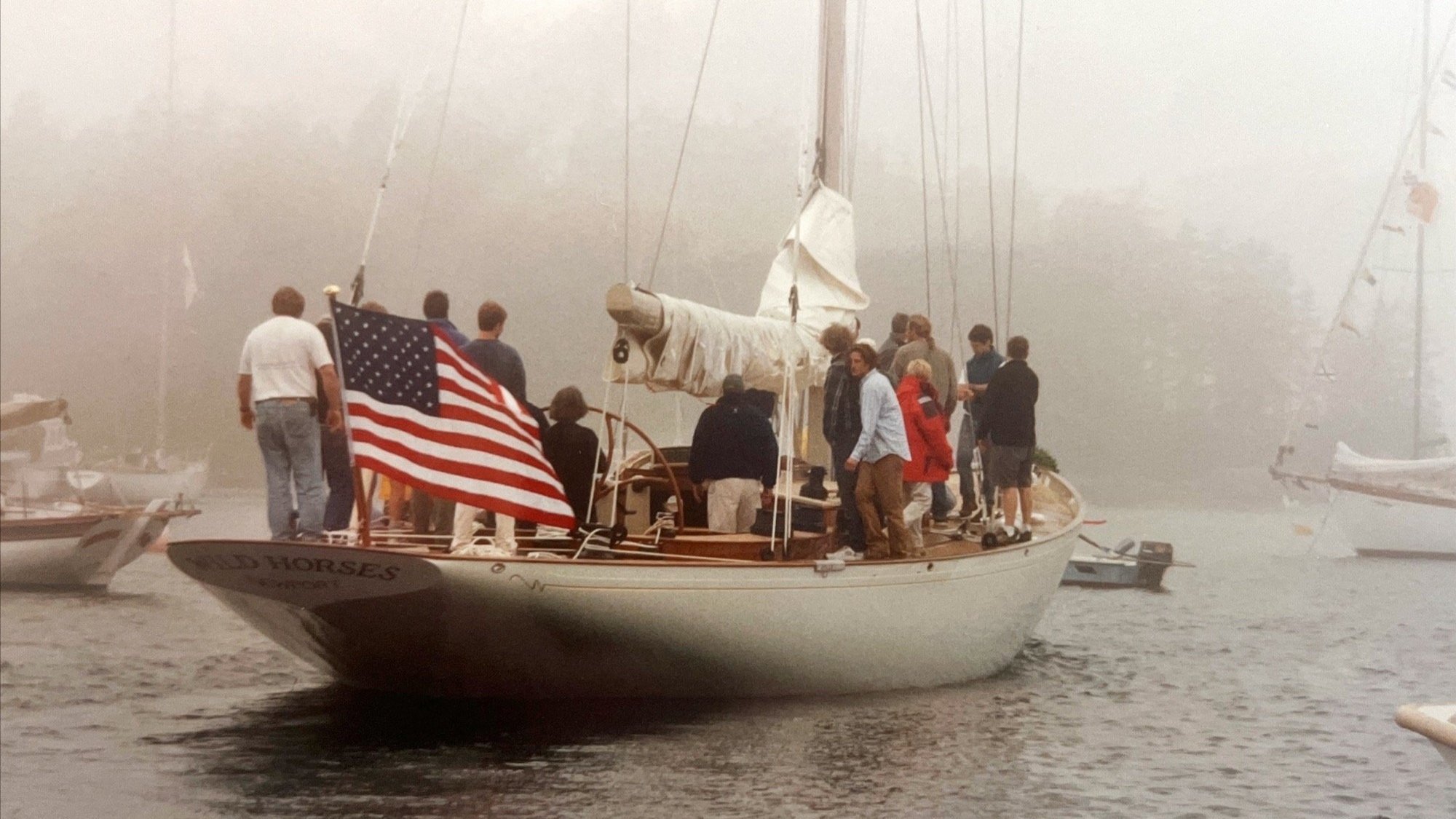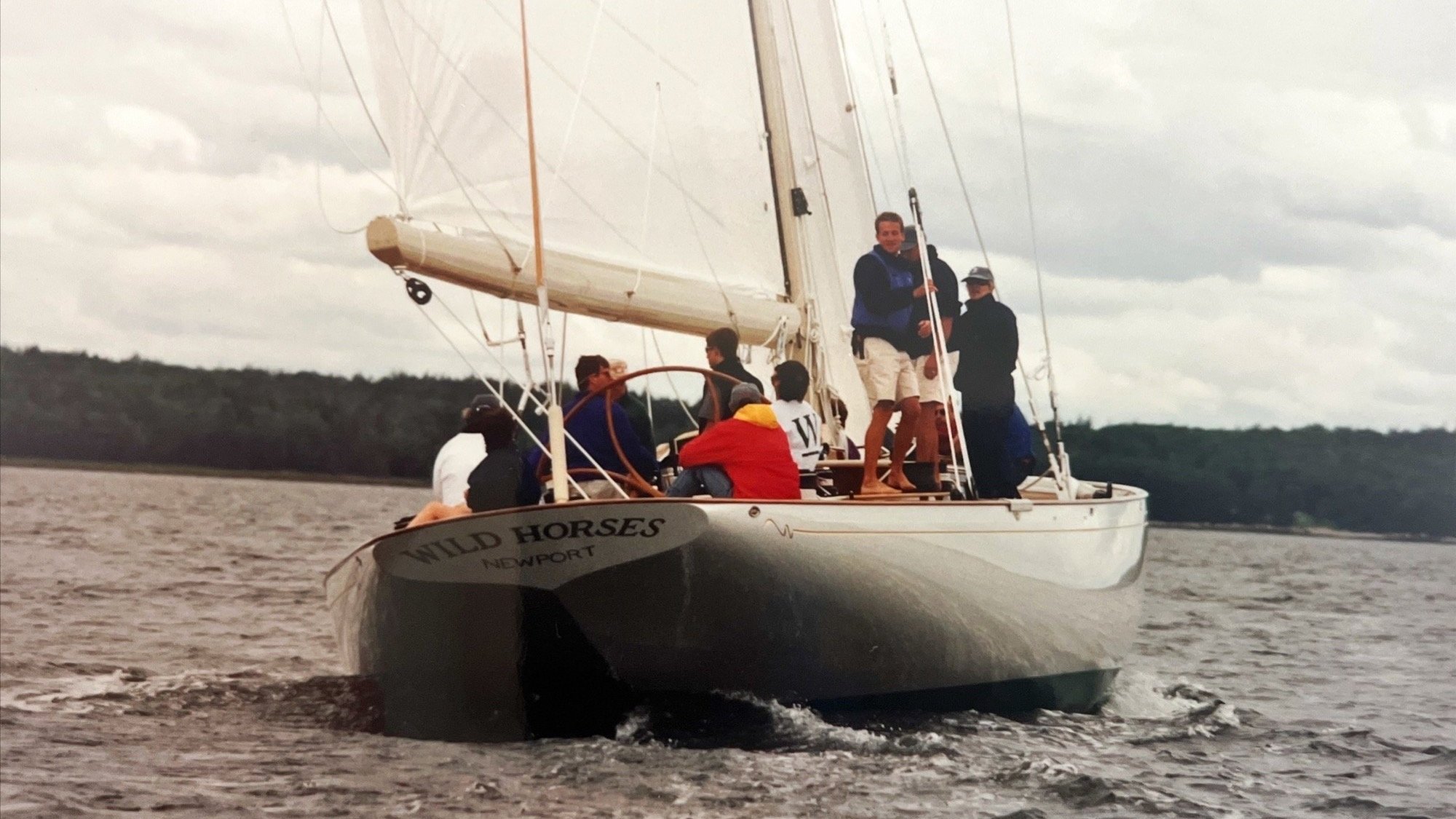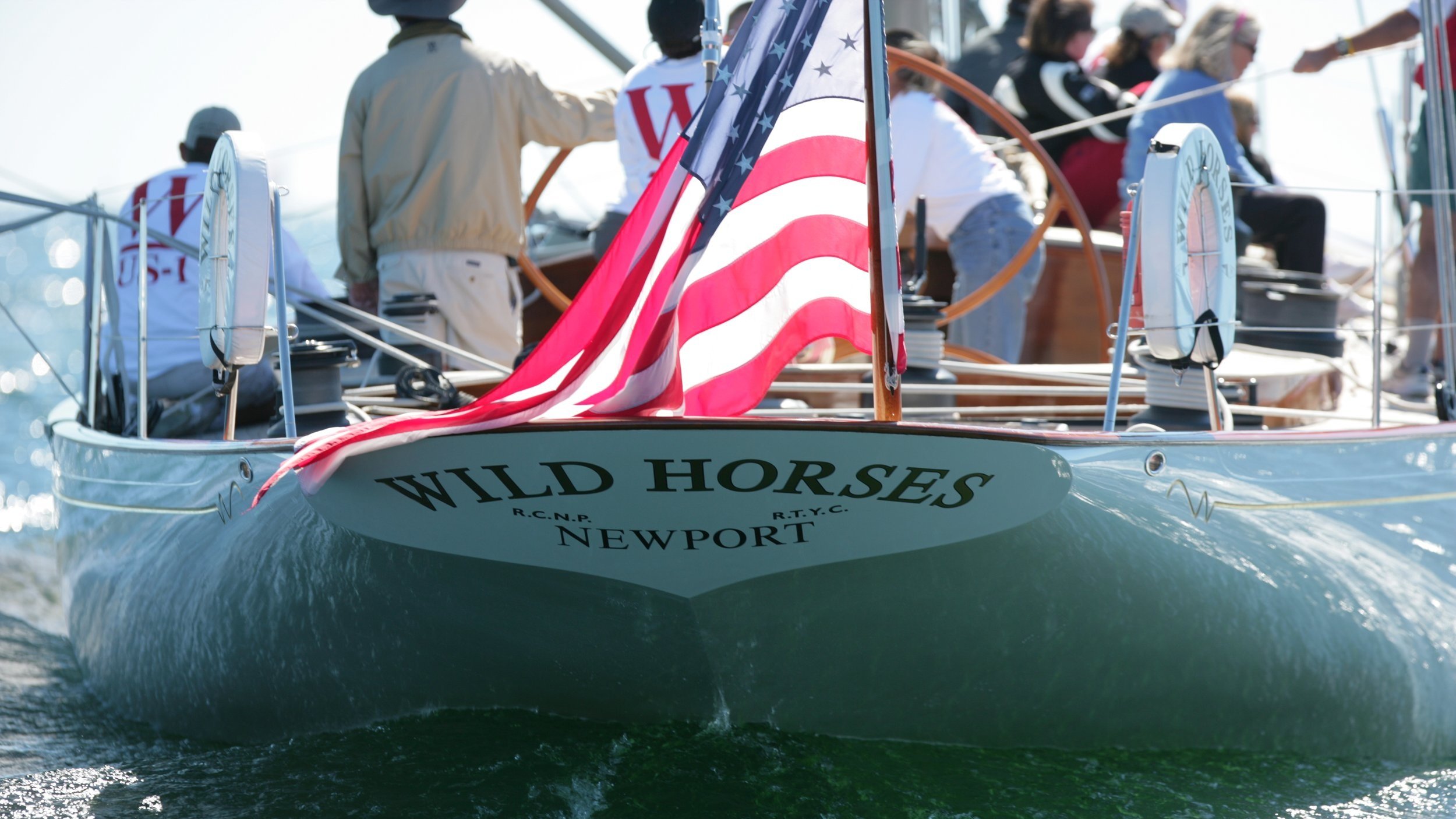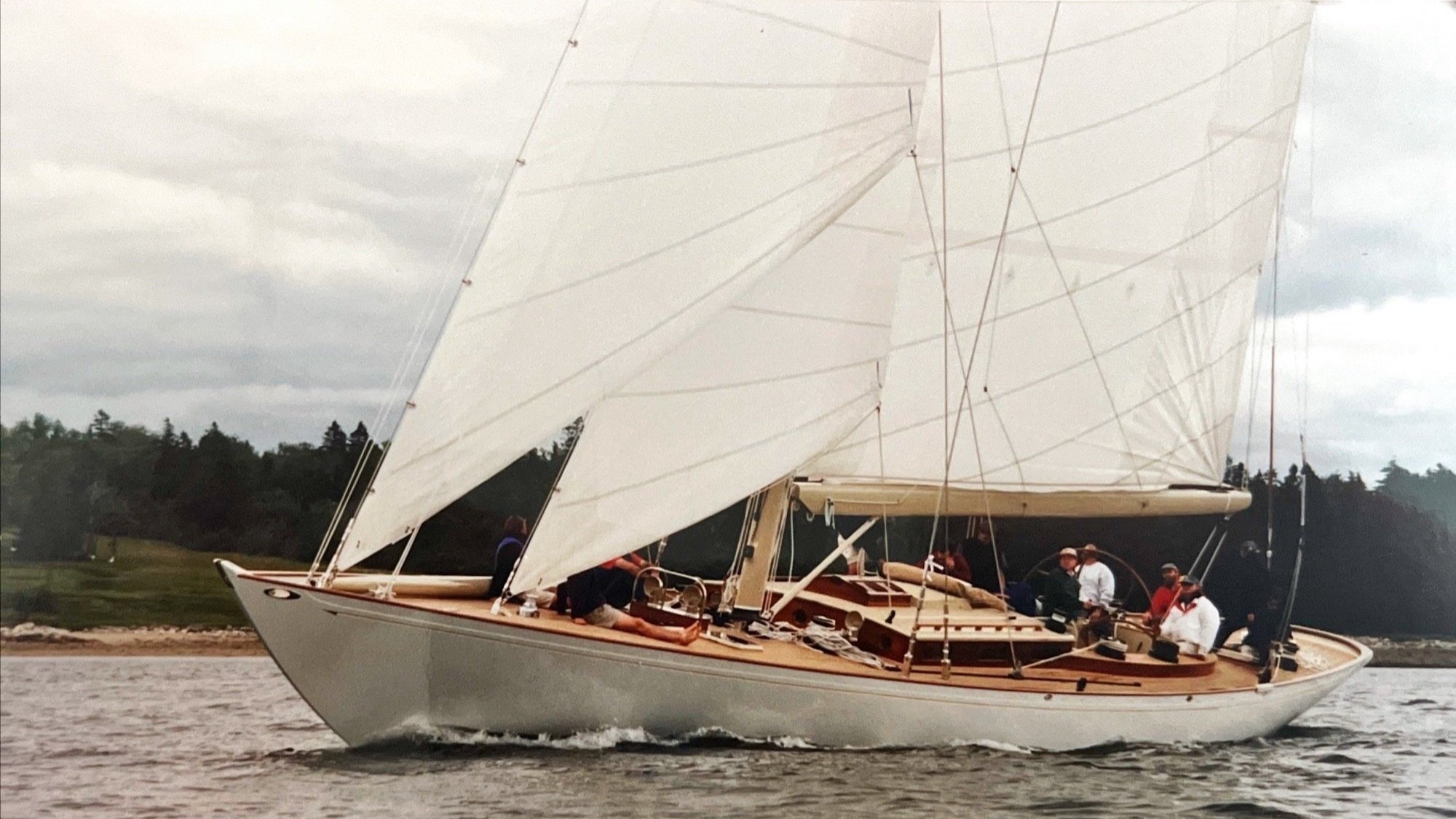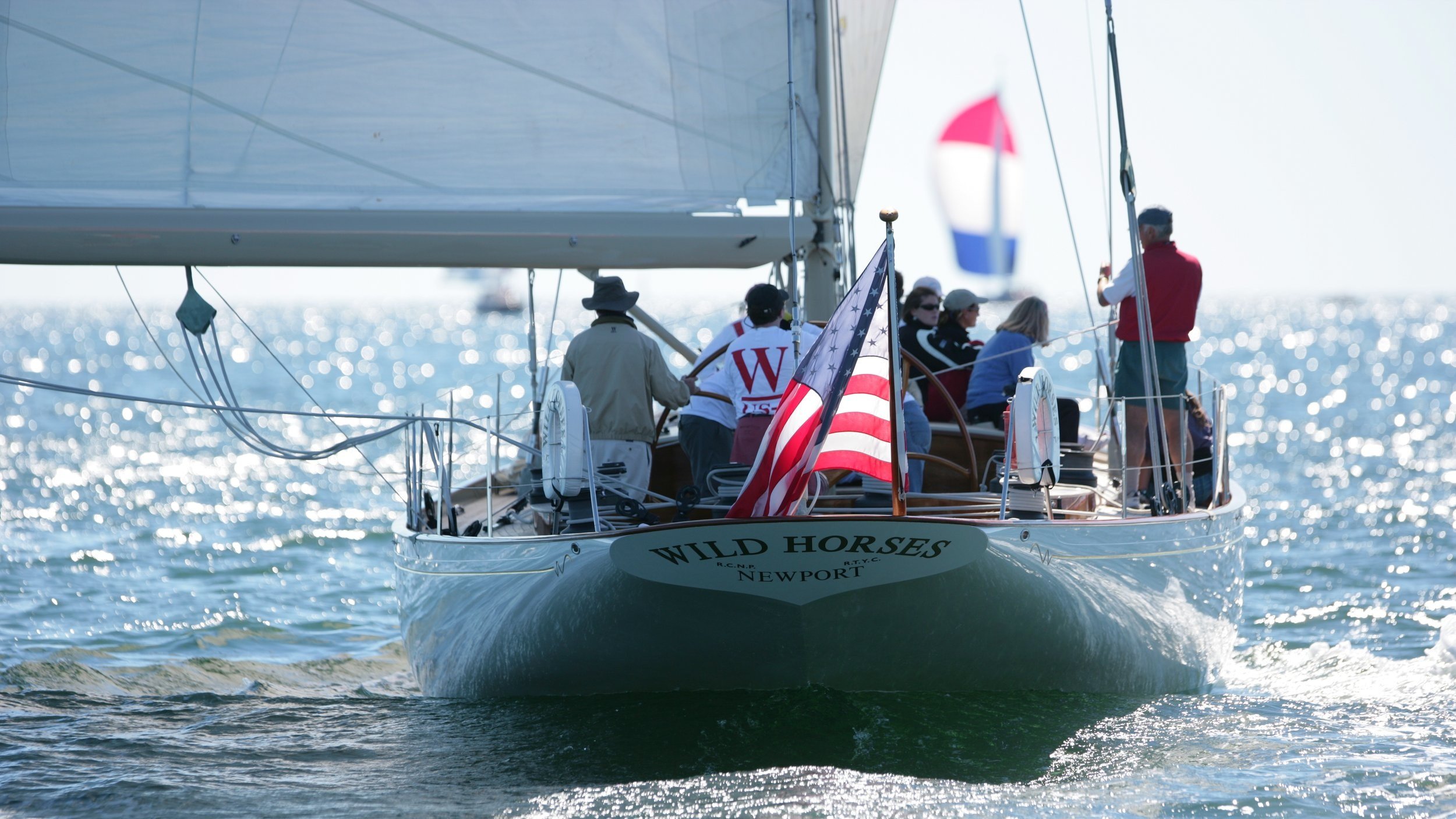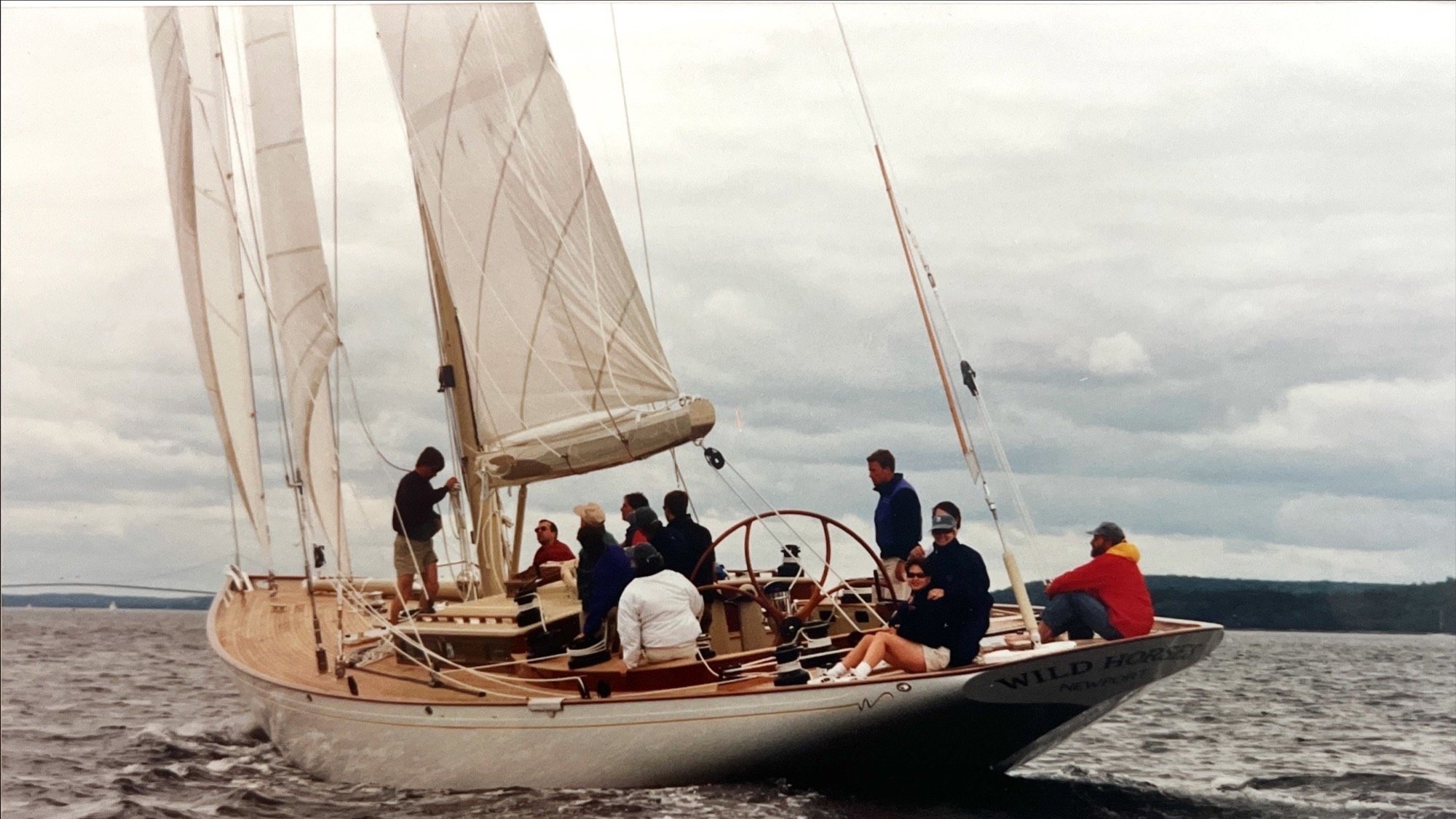Wild Horses 1998
Wild Horses
The W-Class story begins in 1995 after Donald Tofias bought the venerable double-ended, Burgess-designed cutter Christmas, renamed her Arawak, and asked Joel White to make her faster by designing a new lead ballast keel to replace her original iron one, and a taller, more modern rig to go with it. In the process, Donald got to know Joel and Steve White, as well as Taylor Allen whose Rockport, Maine, yard would be executing the changes.
Tofias, having observed J-boats and how much fun racing such boats can be, came up with the idea of reintroducing one-design racing in big boats to the current racing fraternity. He logically based his thinking on New York 50 class sloops, the fleet of nine identical 72' long gaff-rigged lovelies designed and built by Herreshoff in 1913. The 50s were one of the last big one-designs, a type of yacht that died out after the First World War.
By 1913 Herreshoff had adopted an abrupt aft overhang that held little appeal for Joel and Donald. Both agreed that they'd prefer longer, more graceful sterns, and Joel mentioned as well that he didn't just want to tweak another Herreshoff design (as he had already done with the Haven and Flatfish), but preferred to create an entirely new boat, maybe based on certain Herreshoff elements, but not on a single Herreshoff design.
Joel had drawn some proposals and there'd been a few meetings between Donald, Joel, Steve, and Taylor with the idea that once they had a suitable design there'd be two identical boats built: one by Brooklin Boat Yard and the other by Rockport Marine. Joel and Donald also agreed that all rights to the final design would be owned by Donald's company Padanaram Yacht Co., LLC (subsequently renamed W-Class Yacht Co., LLC) instead of the designer, a departure from the usual custom. This allowed Joel to proceed with the design work without risk of the project being abandoned somewhere along the way.
He'd be compensated whether or not the boats were ever built.
Joel soon homed in on a shape that he and the others really liked. He'd become fond of Herreshoff's Buzzards Bay 25s which Steve's crew had recently turned out with cold-molded hulls. For the W-Class sloops Joel figured that if he adopted the general shape of the BB25 midsection and forebody then gave the rest of the boat his own treatment, he'd end up with a pretty good-looking design. What this meant was a long, raking, and fairly-straight stem profile; considerable hollow to the bow, especially at the waterline; a steep and straight deadrise, a long and graceful aft overhang, low freeboard, and a subtle sheer that was noticeably higher at the bow than at the stern. He paid particular attention to shaping the ends of the boat, making the stem face increase in width as it rose from waterline to deckline, and giving the transom a reverse curve (a wineglass shape) near its low point and a touch of tumblehome at its upper corners as they approached the taffrail. Since the hull was to be cold-molded, Joel had to minimize severe concavity and shape the underbody to handle the fin keel and the spade rudder.
Even in this 76-footer, headroom is scant partly because of the low freeboard and partly because of the shape of this boat's underbody. (With reversing sections, hollow garboards, a wineglass midbody, or however else you choose to describe "old-fashioned" hull shapes, the cabin sole can be a good deal lower than in a canoe-bodied fin-keeler.) For headroom, Joel gave the W's a trunk cabin whereas Herreshoff's yachts of this size would have entirely flush decks, pierced only by skylights, hatches, and companionways.
Other limiting size constraints were the length of Brooklin Boat Yard's shop and the width between its granite Travelift support piers.
Joel achieved a spectacularly beautiful result in what turned out to be his last design. With the hull shape, sail plan, and interior arrangement pinned down, Joel forged ahead with the remaining plans, assisted significantly by Bob Stephens, the upcoming and talented designer/builder who'd begun to take over designing and drafting as Joel's health gradually deteriorated. To everyone's amazement, Donald Tofias announced in June of 1997 at the first Mystic Seaport-based Wooden Boat Show that he was ordering two W-76 sloops and that the first would be ready by spring of the following year. Exactly a year later, on June 23rd, 1998, Wild Horses took to the water ready to sail. Joel didn't live to see this, although he did witness the early stages of the first hull which was planked and ready to turn rightside up when he died in December.
White Wings followed at the end of that same summer, by which time Wild Horses had proven that this design sailed as fast as it was beautiful to look at. Taylor Allen and I helped Donald Tofias steer Wild Horses to a resounding victory in the Eggemoggin Reach Regatta, one of that boat's first big races. Since then, the W's have scored many wins and have demonstrated that despite low freeboard and large sail area, they are well-mannered at sea as well as swift around the racecourse.
Written by Maynard Bray


